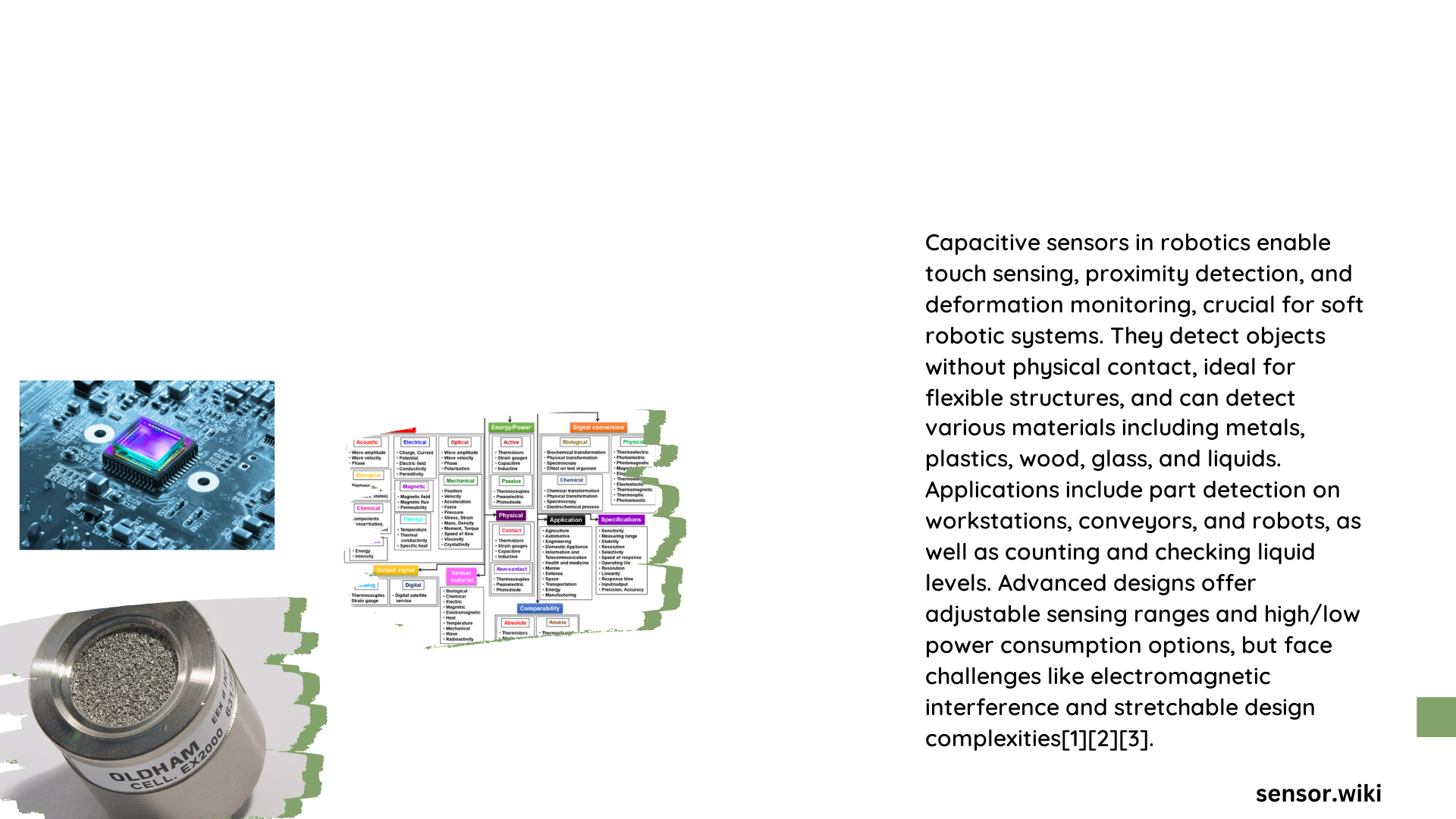Capacitive sensor robotics represents a revolutionary approach to robotic perception, enabling machines to interpret complex tactile information with unprecedented precision. These advanced sensing technologies transform robotic systems by providing high-resolution touch detection, force measurement, and environmental interaction capabilities across diverse applications from humanoid robots to industrial automation.
What Are Capacitive Sensors in Robotics?
Capacitive sensors utilize electrical field variations to detect proximity, touch, and pressure with remarkable sensitivity. In robotics, these sensors function as sophisticated electronic “skin” that allows machines to perceive and respond to physical interactions dynamically.
Key Technical Characteristics
| Sensor Parameter | Performance Specification |
|---|---|
| Spatial Resolution | 12-element sensing array |
| Detection Range | 0-5mm typical |
| Response Time | Milliseconds |
| Sensitivity | Configurable via IO-Link |
How Do Capacitive Sensors Enhance Robotic Perception?

Advanced Touch Detection Mechanisms
Capacitive sensors operate through fundamental principles of electrical capacitance:
- Electrical Field Modulation: Sensors generate electromagnetic fields
- Touch Disruption: Physical contact alters field characteristics
- Signal Processing: Microcontrollers interpret field changes
Performance Metrics in Robotic Applications
Robotic capacitive sensors excel in multiple performance dimensions:
- Force Measurement
- Precise contact force quantification
- Pressure distribution mapping
-
Incipient slip detection
-
Environmental Adaptability
- Temperature resilience
- Humidity compensation
- Electromagnetic interference mitigation
What Challenges Do Capacitive Sensors Address?
Precision Sensing Limitations
Traditional robotic sensors often struggle with:
– Limited tactile resolution
– Slow response times
– Inability to detect subtle environmental interactions
Capacitive Sensor Solutions:
– High-frequency sampling
– Micron-level touch detection
– Real-time feedback mechanisms
Where Are Capacitive Sensors Implemented?
Diverse Robotic Applications
- Humanoid Robotics
- Delicate object manipulation
- Human-robot interaction
-
Gesture recognition
-
Industrial Automation
- Precision assembly
- Quality control
-
Fragile material handling
-
Medical Robotics
- Surgical instrument control
- Prosthetic limb sensitivity
- Rehabilitation technologies
How Are Capacitive Sensors Calibrated?
Sensitivity Configuration Techniques
- IO-Link Protocol: Bidirectional parameter adjustment
- Adjustment Screws: Manual sensitivity tuning
- Software Configuration: Digital sensitivity mapping
Future Research Directions
Emerging capacitive sensor robotics research focuses on:
– Biomimetic sensing technologies
– Machine learning integration
– Nano-scale sensor development
Technical Specifications Snapshot
RoboTact Sensor Capabilities:
– 12-element sensing array
– USB and Bluetooth interfaces
– ROS API compatibility
– Real-time tactile feedback
Cost and Accessibility
- Development Kits: $500 – $2000
- Individual Modules: $5 – $50
- Research Platforms: Comprehensive packages available
Recommended Implementation Strategies
- Select appropriate sensor technology
- Configure sensitivity parameters
- Integrate with robotic control systems
- Validate performance through systematic testing
Emerging Technological Frontiers
Capacitive sensor robotics continues evolving, promising more sophisticated, responsive, and intelligent robotic systems that can perceive and interact with environments more naturally.
Practical Considerations
- Understand specific application requirements
- Consider environmental constraints
- Evaluate sensor specifications carefully
- Plan for ongoing calibration and maintenance
Conclusion
Capacitive sensor robotics represents a transformative technology bridging mechanical systems with nuanced sensory perception, enabling unprecedented levels of robotic interaction and intelligence.
